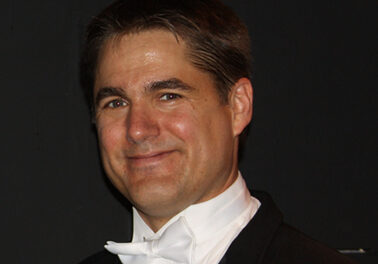The break between the musical intensity of the summer festivals and the start of the new fall season is always trying for classical music lovers. The August doldrums were broken by a visit from The Ries Ensemble, a promising young group capable of flexible configurations. The concert was held in the intimate Whitley Auditorium on the lovely campus of Elon University. Their imaginative program explored folk elements in three diverse works. For each work, the players regrouped to present a string trio, a piano trio, and a piano quartet in turn. Two of the string players, violinist Frances Hsieh and violist Jill King, are members of the Charleston Symphony Orchestra (SC). Two string players have Triangle connections: Hsieh began studying violin under Dorothy Kitchen of the Duke University String School; cellist Brian Howard is a member of several orchestras in the region including the Chamber Orchestra of the Triangle. Their excellent pianist, Jacob Frasch, has an impressive educational pedigree and displays impressive broad musicianship.
The brief Intermezzo for String Trio (1905) of Zoltan Kodaly (1882-1967) dates from the period after he had graduated from the Franz Liszt Academy in Budapest, Hungary, and when he had begun his extensive systematic collecting of folk music. Genuine Hungarian folk tunes are used. Each string player is given the opportunity in turn to shine while the others accompany them. Violinist Hsieh’s intonation and phrasing were excellent and her highest notes precisely placed. King’s viola revealed a full, rich sound that was projected unusually well. Kodaly gave cellist Howard comparatively less exposure but his sound was clear and warm
Folk music was less immediately evident in the brash and engaging Café Music (1986) of Paul Schoenfield (b. 1947). The three strongly contrasted movements for piano trio were originally commissioned by the St. Paul Chamber Orchestra. It has been heard widely throughout the state during early tours by the Eroica Piano Trio and Triple Helix. According to the composer’s brief program note, he wanted “to write a kind of high-class dinner music” suitable for a restaurant but “also (just barely)” for the concert hall. This delightful piece is one of the few that would work well on an upright piano. Frasch coaxed Elon’s wonderful restored 1923D Steinway into sounding like a speakeasy stalwart as he dashed through ragtime, stride piano, or seeming Broadway tunes. He and Hsieh and Howard blended beautifully lovely second movement based on a Chassidic melody. All three raced through the high jinks of the “Presto” finale with aplomb.
All four Reis Ensemble players joined after intermission for an unusually sensitive performance of the spirited Piano Quartet No. 1 in G minor, Op. 25 (1855-1861) of Johannes Brahms (1833-1897). If an ensemble’s keyboard player is heavy-handed, this work can be a turgid struggle, like a chamber work trying to metamorphose into the composer’s stormy First Piano Concerto. Pianist Frasch’s playing was a model of how the instrument ought to be balanced with strings. No matter the dynamics, all three string players’ lines could be clearly heard. The give-and-take between the piano and strings in the first part of the first movement was delightful. The second theme was sung out gloriously by the violin and viola in unison, perfectly matched. The hushed, muted strings alone that open the wistful second movement were just the first of a plethora of delights. In this movement, and in the third during the duet with Howard’s cello, King’s viola had many opportunities to glow. The Ries folks pulled out all the stops for the boisterous Hungarian rondo finale. This was one of the most transparent performances of this work which can become easily muddied in texture.
This concert was so satisfying I attended its repeat in Nelson Music Room on the Duke University Campus on August 22. This equally fine performance confirmed my impression that The Ries Ensemble is a very promising addition to the world of traveling chamber groups.












